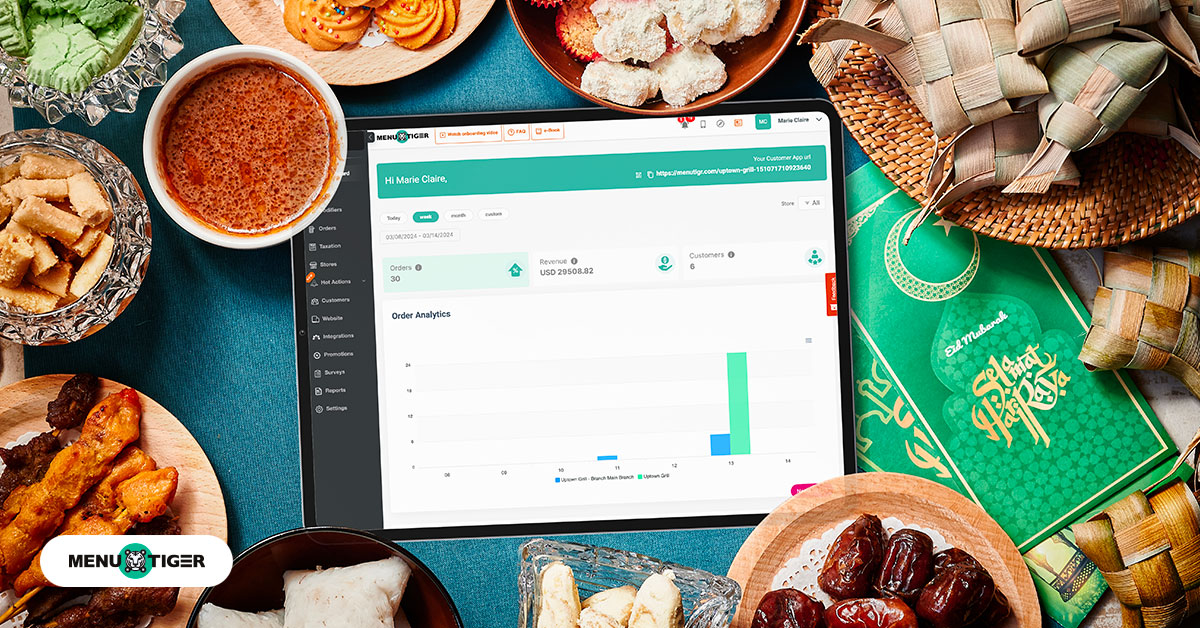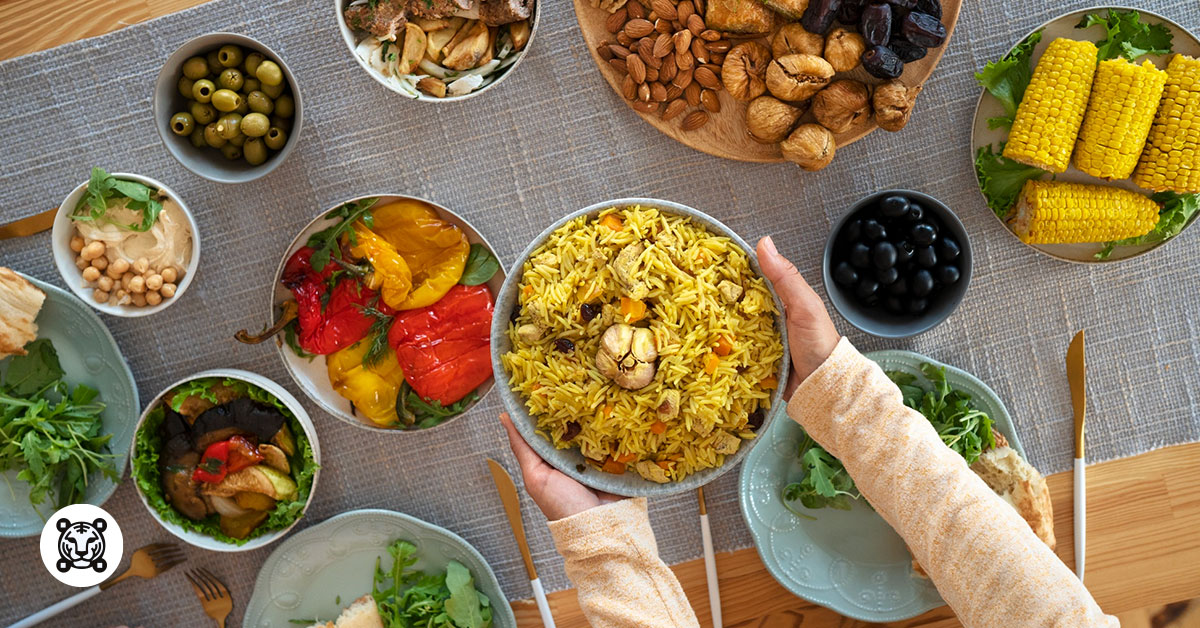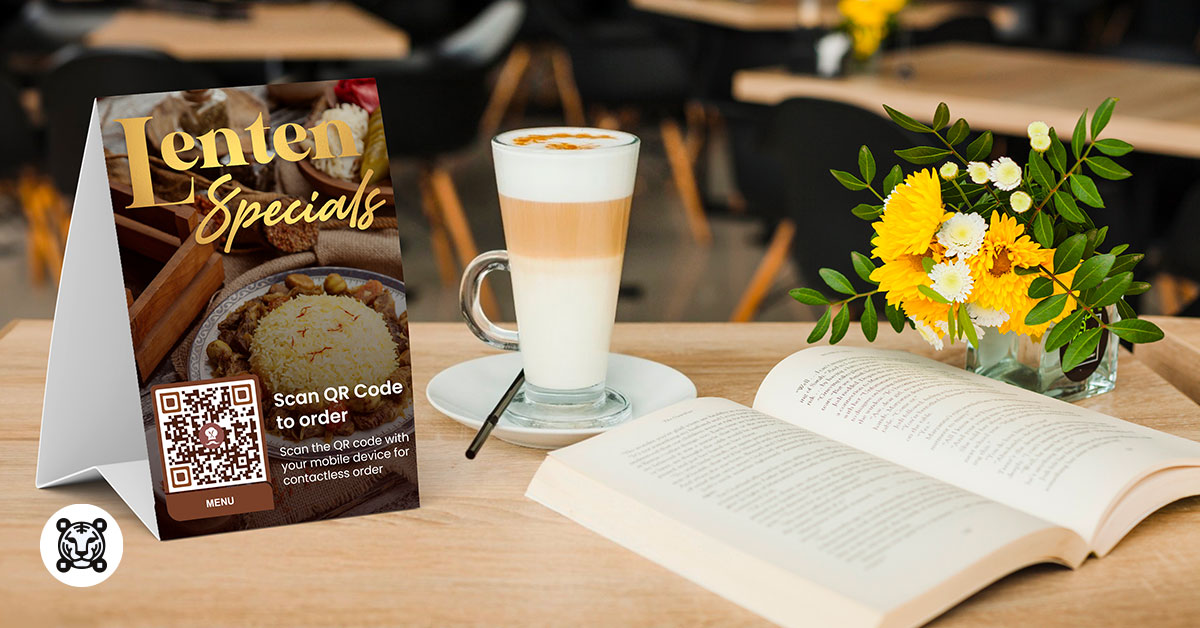
How to Customize Menu for Religious Holiday
Last Updated: November 26, 2025
Knowing how to tweak your menu for religious holidays is key for restaurant owners looking to nail those special celebrations. Because let's face it, food and religious traditions go hand in hand, right?
But here's the real question: How do you make sure you're serving up the perfect dishes for these sacred occasions? And can your restaurant handle the rush of customers that come with them?
Luckily, thanks to those nifty QR code menu platforms, we've seen some serious game-changers in the restaurant business over the last few years. From Holy Week to Diwali, customers can now easily order up the right grub for any religious festivity with just a few taps on their phone.
And here's more: these digital menus are not just handy for customers, they are a total game-changer to restaurant owners, too.
You can add special highlights for religious holidays, like options for no red meat, halal, or kosher diets. It's all about making sure everyone feels included and catered to.
So, if you're on the hunt for some fresh menu ideas for those religious holiday shindigs, we've got you covered. From highlighting traditional dishes to catering to specific dietary needs, we've got all the tips and tricks to help you curate a menu that will wow your guests and keep them coming back for more.
The connection between food and religion

Food has always played a crucial part in religious customs and rituals across the world for centuries, covering a wide range of cultures and religious traditions.
In most cases, food reflects the beliefs, practices, and characteristics associated with a particular religion and is also a way of expressing spiritual values and preserving cultural heritage.
For starters, it is important to realize that food can often represent a religious experience. For example, in some religions, fasting is associated with certain holidays or events. Many see it as a way of spiritual refining, as well as a way to demonstrate devotion to one’s faith.
Whether through religious dishes, special holiday meals, or simple cultural meals, understanding the connection between food and religion can open restaurants to a new market of customers who practice certain religious customs.
Overall, understanding the relationship between food and religion can be a helpful marketing tool, allowing restaurateurs to create unique advertising campaigns and menu items that appeal to customers of different religions and cultures.
Adding the Holy Week religious diet to your online menu

Holy Week is an important week in the Christian calendar and a time of reflection, prayer, and contemplation for many believers.
This week starts on Palm Sunday and ends on Easter Sunday, the highest and most important day of the Christian year.
It is customary among Catholics to abstain from consuming meat during Holy Week.
To cater to your Christian diners, here are foods you should not serve during Holy Week:
- Red meat (beef, pork, ham)
- Chicken
Alternative holiday menu ideas you can offer instead:
- Seafood (fish, crabs, shrimp, lobsters)
- Vegetables (legumes, stir-fried vegetables, sauteed mung bean sprouts, salads)
- Fruits
- Yogurt, milk, and other dairy products
According to the church historian Socrates, Christians today fast in varied ways depending on their local customs.
Some abstain from all living creatures, while others eat only fish and poultry. Others eat only bread, and others abstain from eating altogether for a specific period during the day.
Depending on an individual’s practice, the type and duration of fasting can vary greatly.
Other religion and food restrictions: Halal and Kosher

Before getting into the world of Halal and Kosher, you must understand that their food must undergo specific preparation standards to meet religious regulations.
Restaurateurs must learn about these dietary regulations and the religious implications of serving and consuming certain food items before incorporating these dishes into their menus.
When adding Halal and Kosher dishes to your menu, you must understand the regulations and standards associated with each diet.
This is the only way to ensure that you can create meals that meet your customers' needs while meeting their requirements.
Understanding Halal and Kosher standards better before including them in your holiday menu template and ensuring their adherence will surely make your customers feel welcomed and respected.
The Halal Diet (Islam)
Halal is an Arabic word meaning lawful or permitted.
According to Islamic teachings, a food item is halal when they’re from a specified list of allowable food sources and contain no haram (prohibited) ingredients like alcohol, animal fats, gelatine, and bacon.
Further, halal meats must be slaughtered in a specific way to ensure that the animal is killed in the name of Allah and treated humanely throughout the process.
Investing in separate slaughtering and storage supplies, utensils, and equipment may be beneficial and considered a good business practice.
This shows attention to detail and respect for customers of all faiths and demonstrates that your establishment is mindful of their needs.
Here are some halal ingredients that you can use in your restaurant menu:
- Meat and poultry slaughtered according to Islamic dietary law
- Eggs
- Seafood
- Nuts and seeds
- Peanut butter
- Tofu
- Dried beans and lentils
- Milk
- Vegetables and fruits
- All juices
- Rice
- Pasta
- Grains, cereals, or baked goods without haram ingredients
If you opt to serve a halal menu, take the time to ensure they are prepared and handled properly.
Thus, consider consulting recognized and trusted organizations, such as the Islamic Services of America and the International Halal Integrity Alliance.
The Kosher Diet (Judaism)
Judaism has long maintained a strict set of religious diet laws known as Kosher laws (or “Kashrut”).
These laws aim to ensure meals consumed according to Jewish dietary customs are as clean, pure, and holy as possible, thus promoting a healthy and spiritual life.
The increasing presence of Kosher cuisine holiday menu ideas in restaurants provides an opportunity for food establishments to attract a new and growing demographic.
To successfully include Kosher items in their menus, restaurant owners should understand the Jewish religion, their religion eating culture, its rules and customs, and specific techniques to prepare and serve these dishes.
Restaurants should verify the reliability of their sources for food items and consider working with specialists for food quality assurance.
Kosher foods fall into three categories:
- Meat – mammals or fowl (or products derived from them)
- Dairy – milk, cheese, yogurt, and butter
- Pareve – non-meat or non-dairy foods (fish, eggs, vegan foods)
Note: Meat should not be served together or eaten with any dairy products.
Additionally, you must separate all utensils and equipment used to process and wash meat and prepare dairy from the rest. You must also wash them in different sinks.

How to customize menu for religious holidays: The digitization of restaurant menu

Creating a menu that caters to your customer's needs can be difficult since you must tailor it to their needs and interests, especially when catering to people of specific religions.
You can create customized holiday options using a digital menu to make this easier. This will make it clearer for your workers as orders are organized and easy to track.
By using a QR code menu for religious holidays, restaurants can offer tailored menus that fit religious occasions. Here’s how to make the most of your digital menus for religious holidays:
Identify your target audience
Before creating a holiday menu template, it is crucial to identify the target audience. Understand who they are, what they need, and how they can benefit from a menu tailored to the occasion.
This will help create a more successful menu and ensure visitors of all backgrounds can easily find items that suit their practices.
Select the right items/ingredients
Once you have identified the target audience, you must select the right items for the menu. You must follow the dietary guidelines of the holiday and the laws and traditions of your target audience’s food culture and religion.
For example, if you offer a menu for Eid ul-Fitr (the end of Ramadan, Muslim’s holy month of fasting), select halal food items as your target consumers are Muslim.
Add interesting touches
Once you select the main items for the menu, you have to add interesting touches. Add a meaningful message or holiday-inspired visuals to the menu to make it relevant to the occasion.
Visuals can be as simple as an egg-shaped dessert with a twist if it’s for the Easter holiday.
Make it easily accessible
Finally, ensure that your religious holiday menu is easily accessible to customers. Restaurant owners can use a QR menu to make finding and browsing the menu more straightforward.
You can post your QR code on any social media platform so customers can quickly search the menu and review your food options.
In conclusion, QR menu features offer the perfect solution to accommodate various customers during these religious holidays.
These digital menus make it easy for restaurant owners to customize their menus during religious holidays.
They provide a diverse selection of dishes suitable for people of all faiths and a range of dietary needs. This results in a menu everyone can enjoy, even if their customs and beliefs differ.
As long as you take time to learn and practice the dos and don’ts of these religions’ food customs, then you are good to go.
How do you write a holiday menu? (The MENU TIGER way)
It is important to stay on top of the latest technology to meet your customers’ needs according to their religious beliefs and practices, and MENU TIGER is a perfect tool for that.
MENU TIGER is an easy-to-use solution that can help you customize your digital menu for any special holidays and keep the customer experience during religious holidays as stress-free as possible.
Create your interactive digital menu with MENU TIGER. Here’s how to do it:
- Sign up with MENU TIGER
- Enter your full name and contact number
- Enter the name of your business and restaurant type
- Choose language
Note: Manually translate your menu into different languages then add them to the software.
- Choose how to organize your menu
- Import your menu – download a sample sheet to fill in your menu, then re-upload
- Blank state – start from scratch
- Create a sample menu with prebuilt categories and menu.
How can you create a menu list with MENU TIGER?
1. Click Stores under the Dashboard

Note: You can only add more branches after upgrading your account subscription. Check MENU TIGER QR menu pricing.
2. Customize menu QR code

Click Customize QR and modify your QR code’s design according to your restaurant’s brand.
3. Click Tables+ and add the name.

Note: You can add up to 10 tables with Freemium. Upgrade your account to add more tables.
4. Test scan your QR code, then Download

5. Create your Menu list

Click the Food section under Menu then add Categories. Fill in all the pieces of information asked before clicking Add.
Note: In Categories, you can also add Halal and Kosher in preparation for the religious holidays.
6. Click each category you just created then Add your dishes.

Fill in the required section. You can specify its Modifier Group and Ingredients Warning, then upload appealing images of each item.
Notes: You can also add Modifiers under your Menu, just click the “Modifiers” section under the “Food” section. Or put Modifiers according to religion and food restriction especially this upcoming religious holidays. (i.e. no pork, no milk, etc.)
7. Set taxation

Find out local taxation regulations to reflect the local tax rates in your state.
Choose whether your item prices already have tax inclusion or if you want to apply tax on top of item prices.
8. Set Payment Method

Click the Integration section to add the payment method you want to integrate for your restaurant.
Note: You can enable “Cash” for customers who prefer to pay with bills.
9. Personalize the website menu page

Click Website then start customizing your landing page, digital menu page, overall design, and more.
Finally, customers can now scan through your QR code and browse your digital menu.

Create your QR code menu with MENU TIGER
Maintaining an appealing and easy-to-navigate smart digital menu for religious holidays is key for restaurant owners.
Tailoring the menu to special occasions cements the restaurant’s reputation as a go-to destination for both its patrons and potential customers.
With that said, restaurateurs must know how to customize menu for religious holiday to cope with the demand of these upcoming special celebrations.
With MENU TIGER, customizing your digital menu to fit any holiday is easy. With its easy-to-edit digital menu, you can modify it to fit any religious celebration.
In addition, its Admin app lets you easily track your customers’ orders, which is beneficial for special occasions like religious holidays. It allows you and your workers to track orders, see which table the order came from, and more.
In this case, your workers can focus more on preparing your customers' orders since the digital menu has reduced their workload. This means you can provide a more efficient service, even during the busiest days.
With one scan of your customized QR code, your customers will be immediately redirected to your digital menu and enjoy a hassle-free ordering and dining experience.
Go to MENU TIGER and customize a QR code menu for the upcoming religious holidays. Sign up for a freemium account today.
FAQs
Riza
Riza is a versatile author for MENU TIGER. She draws inspiration from her passion for food, travel, and KPop. As a reader, writer, teacher, and food enthusiast, her stories reflect her restaurant adventures and spontaneous travels.


